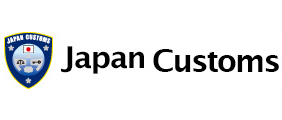Announcement on rules of origin(Japan-EU EPA)
Announcement regarding an additional explanation of the originating status of a product, which Japan Customs requests at the time of import declaration
In connection with the announcement made on 14 March 2019, please be aware of the below points with regard to the origin procedures for the purpose of a claim for preferential tariff treatment under the EU-Japan EPA (“the Agreement”), which simplified as from 1 August 2019 in line with paragraph 2 (“How to apply the new procedures”) below.
1. Overview
At the time of import declaration, in accordance with the second sentence of Article 3.16(3) of the Agreement, Japan Customs requests from an importer, who claims preferential tariff treatment for a product under the Agreement, to provide an explanation, as part of the import declaration, that the product satisfies the requirements of the Agreement. The “explanation” refers to an additional explanation on the originating status of the product, which is provided in addition to a statement on origin or the importer's knowledge.
However, where an importer makes a claim for preferential tariff treatment based on the statement on origin in accordance with Article 3.16.2(a) of the Agreement, the importer is not obliged to provide any additional explanation on the originating status of the product besides the statement, if such information is not available to him/her. In this regard, the exporter (including the producer; hereinafter the same shall apply) is responsible for the correctness of the statement on origin and of the information provided in accordance with Article 3.17(1) of the Agreement.
To reply to a request for an explanation at the time of import declaration, an importer is not asked to obtain additional information from the exporter who has made out the statement on origin, and the exporter is not obliged to provide such information at the time of import declaration.
Furthermore, an importer, who states that he/she cannot provide an additional explanation besides the statement on origin issued by the exporter, does not need to specify a reason why he/she cannot provide any such explanation.
In the above case, the absence of such explanation besides the statement on origin will not lead to a rejection of the claim or a denial of preferential tariff treatment under the Agreement.
2. How to apply the new procedures
Where the importer cannot provide an additional explanation on the originating status of the product, please refer to point (1) below. On the other hand, where the importer provides an additional explanation, particulars to be noted as part of the explanation will be simplified as per point (2).
(1) The importer cannot provide an additional explanation
Where the importer who makes a claim based on a statement on origin and who, when requested, cannot provide an additional explanation on the originating status, he/she can use the NACCS platform to describe that he/she cannot provide an explanation. In this case, the importer does not need to submit any additional explanation.
- Interim simplified procedure from 1 August 2019
- by typing the text mentioned below into the text field of the electronic import declaration.
In Japanese: 私は産品が原産品であることに係る追加的な説明は提供できません。
In English: I cannot provide an additional explanation on the originating status of the product. - The simplified procedure is (scheduled to be) applicable by 1 December 2019
- by inserting a predetermined code into the electronic import declaration on NACCS. (Details will be announced later.)
(2) The importer provides an additional explanation:
Where the importer decides to provide an additional explanation to a customs office, it may be done as follows:
- When a claim for preferential tariff treatment by the importer is based on a statement on origin:
To explain that the product is originating, please provide the particulars below.
In this case, the importer may use the attached form entitled: “Explanation that the product satisfies the origin criteria”.
a) Invoice number and date of issue(please refer to the invoice which contains the originating products if multiple invoices are submitted);
b) Explanation that the product satisfies the origin criteria; and
c) Name of the person who produced the explanation.
Please note that the exporter is responsible for the correctness of the statement on origin made out and of the information provided, in accordance with Article 3.17(1) of the Agreement. - When a claim for preferential tariff treatment by the importer is based on the importer’s knowledge:
To explain that the product is originating, please provide the particulars below.
In this case, the importer may use the attached form entitled: “Explanation that the product satisfies the origin criteria”.
a) Invoice number and date of issue (please refer to the invoice which contains the originating products if multiple invoices are submitted) ;
b) Explanation that the product satisfies the origin criteria; and
c) Name of the person who produced the explanation.
Please note that in order for the importer to claim for preferential tariff treatment, it is assumed that the importer has already obtained information which demonstrates that the product is originating and satisfies the requirements provided for in the Agreement, in accordance with Article 3.18 thereof.
3. Points to note
- At the time of import declaration, in accordance with the second sentence of Article 3.16(3) of the Agreement, the customs authority may request an importer to provide an additional explanation which is available to him/her, under the conditions of point 1.
- At the time of import declaration or after release of the products, the customs authority may conduct a verification based on risk assessment methods in accordance with Articles 3.21 and 3.22 of the Agreement, where necessary, based on risk assessment methods, at the time of import declaration or after release of the products, which may result in that preferential tariff treatment is not granted, under the conditions of Article 3.24 of the Agreement.





![Customs Channel[YouTube]](/english/common2018/img/banner-youtube.jpg)
